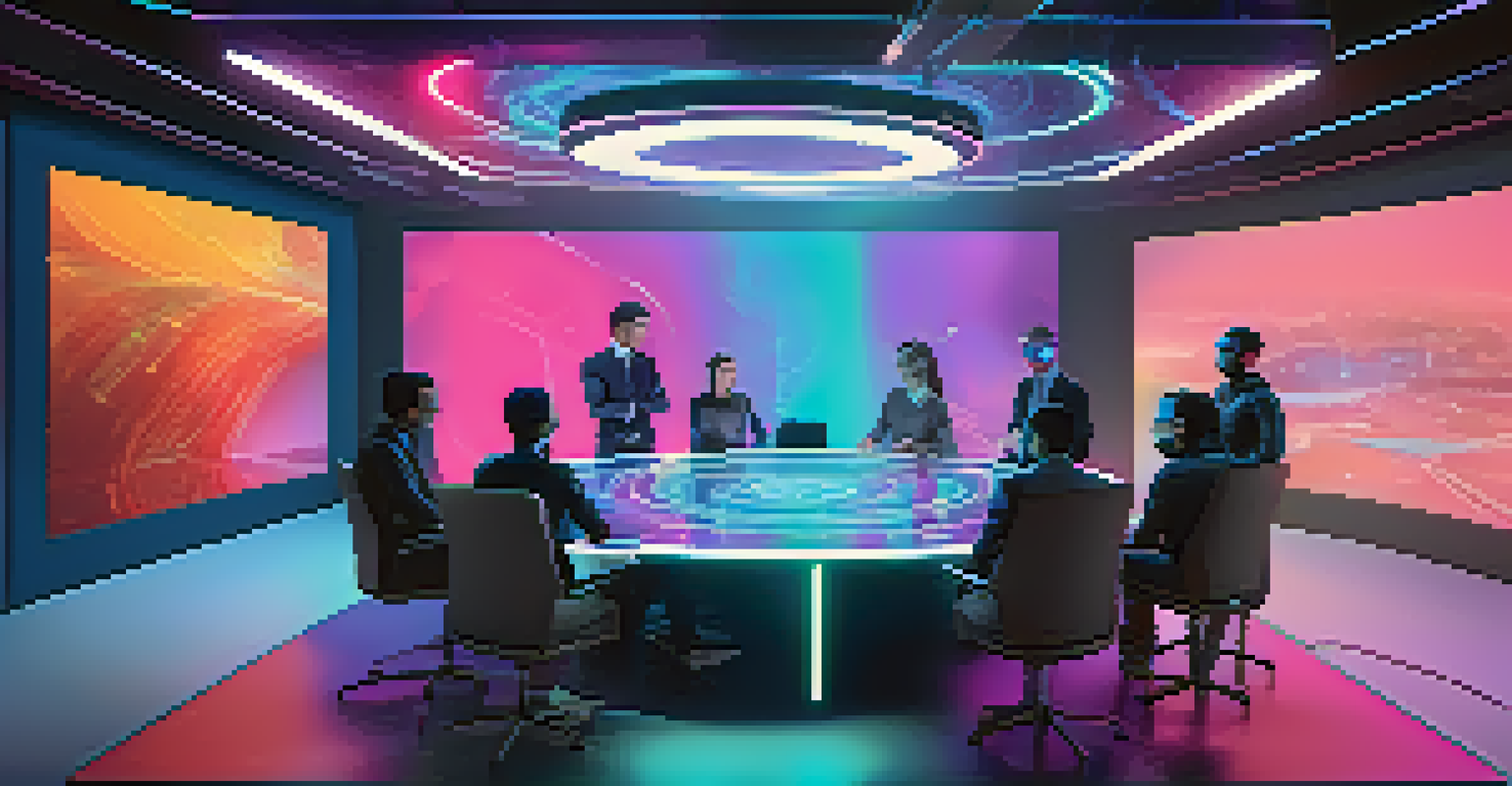The Future of Remote Work: AR and VR in the Workplace

The Evolution of Remote Work: A Brief Overview
Remote work has come a long way over the past decade. Initially, it was seen as a perk for employees, but the COVID-19 pandemic accelerated its acceptance and integration into the corporate culture. Today, remote work is not just a trend; it's a new normal that many organizations embrace.
Remote work is not a place; it is a mindset.
As technology evolves, so does the way we work remotely. From simple video calls to more sophisticated collaboration tools, each innovation has aimed to bridge the gap between remote employees. This shift has laid the groundwork for even more immersive technologies like Augmented Reality (AR) and Virtual Reality (VR).
These technologies promise to redefine how we interact and collaborate from afar. Imagine attending a virtual meeting where you can interact with 3D models or participate in team-building exercises in a virtual space, all from the comfort of your home.
Understanding AR and VR: What They Are and How They Work
Augmented Reality (AR) overlays digital information onto the real world, enhancing our perception of our surroundings. For instance, using AR, a remote worker could see virtual sticky notes on their physical desk, reminding them of tasks. This blend of digital and physical can lead to more engaging work environments.

On the other hand, Virtual Reality (VR) transports users into entirely virtual environments. Think of VR as stepping into a different world where everything is simulated. This can be particularly useful for training or simulations that require a hands-on approach without the risks of real-world consequences.
Remote Work's New Normal
The COVID-19 pandemic has transformed remote work from a perk into an integral part of corporate culture.
Both AR and VR hinge on advanced technologies like 3D rendering and motion tracking. As these technologies become more accessible, their integration into the workplace will likely expand, offering new ways to collaborate and innovate.
The Benefits of AR and VR in Remote Collaboration
One of the most significant advantages of using AR and VR in remote work is enhanced collaboration. Team members can share ideas in real-time, regardless of their physical location, creating a more cohesive team dynamic. Imagine brainstorming sessions where everyone can visualize concepts together, leading to more effective outcomes.
The future of work is not about where we work, but how we work together.
Additionally, these technologies break down geographical barriers, allowing organizations to tap into global talent. A team in New York can collaborate seamlessly with colleagues in Tokyo, fostering a diverse and inclusive work environment. This global collaboration can spark creativity and innovation.
Moreover, AR and VR can significantly improve training and onboarding experiences. New hires can participate in immersive training sessions that simulate real-world scenarios, making the learning process more engaging and effective.
Challenges and Limitations of AR and VR in the Workplace
Despite their potential, AR and VR technologies are not without challenges. One significant hurdle is the cost of implementation. High-quality AR and VR equipment can be expensive, and not all companies can afford the initial investment. This can create discrepancies between organizations that can leverage these tools and those that cannot.
Another concern is the learning curve associated with these technologies. Employees may require training to effectively use AR and VR tools, which can temporarily disrupt productivity. Organizations need to balance the benefits of these technologies with the time and resources required for proper implementation.
AR and VR Enhance Collaboration
Augmented Reality and Virtual Reality technologies foster real-time collaboration, breaking geographical barriers and improving team dynamics.
Finally, there's the issue of accessibility. Not all employees may have access to the necessary hardware or a suitable internet connection, which could create inequalities in remote work experiences. Addressing these challenges will be critical for widespread adoption.
How AR and VR Can Enhance Employee Well-being
AR and VR technologies can also play a pivotal role in promoting employee well-being. For instance, virtual meetings can reduce the fatigue associated with traditional video calls by creating more engaging and interactive environments. Employees can feel more connected and less isolated, which is crucial for mental health.
Additionally, these technologies can facilitate social interactions among remote workers. Virtual coffee breaks or team-building events in a VR space can help maintain company culture and foster camaraderie, even when teams are physically apart. This social aspect is vital for keeping morale high.
Moreover, AR can assist in creating ergonomic workspaces by providing real-time feedback on posture and workspace setup. This ensures employees are comfortable, which can lead to increased productivity and reduced physical strain.
The Future Landscape of Remote Work: Trends to Watch
As we look ahead, the integration of AR and VR in remote work is likely to grow. Companies are increasingly recognizing the value of these technologies in creating more immersive and productive work environments. Keeping an eye on emerging trends will help organizations stay ahead of the curve.
One trend to watch is the rise of hybrid work environments, where employees can seamlessly switch between remote and in-office work. AR and VR will enhance this flexibility, enabling employees to interact with their physical office space from anywhere in the world.
Challenges of AR and VR Adoption
High costs, a learning curve, and accessibility issues pose significant challenges to the widespread adoption of AR and VR in the workplace.
Another exciting development is the potential for more personalized work experiences. AR could allow for customizable virtual workspaces tailored to individual preferences, making work more enjoyable and productive.
Conclusion: Embracing the Future of Work with AR and VR
In conclusion, the future of remote work is bright, especially with the integration of AR and VR technologies. These tools offer transformative potential for collaboration, training, and employee well-being. As organizations adapt, they will likely find innovative ways to harness these technologies to enhance productivity and create a more engaging work environment.
However, it's essential to address the challenges and limitations that come with these advancements. By finding solutions to issues like cost and accessibility, companies can ensure that all employees can benefit from the immersive experiences AR and VR have to offer.

Ultimately, embracing AR and VR in the workplace is not just about technology; it's about reimagining how we work together. As we continue to evolve, these technologies could redefine our work experiences for the better.